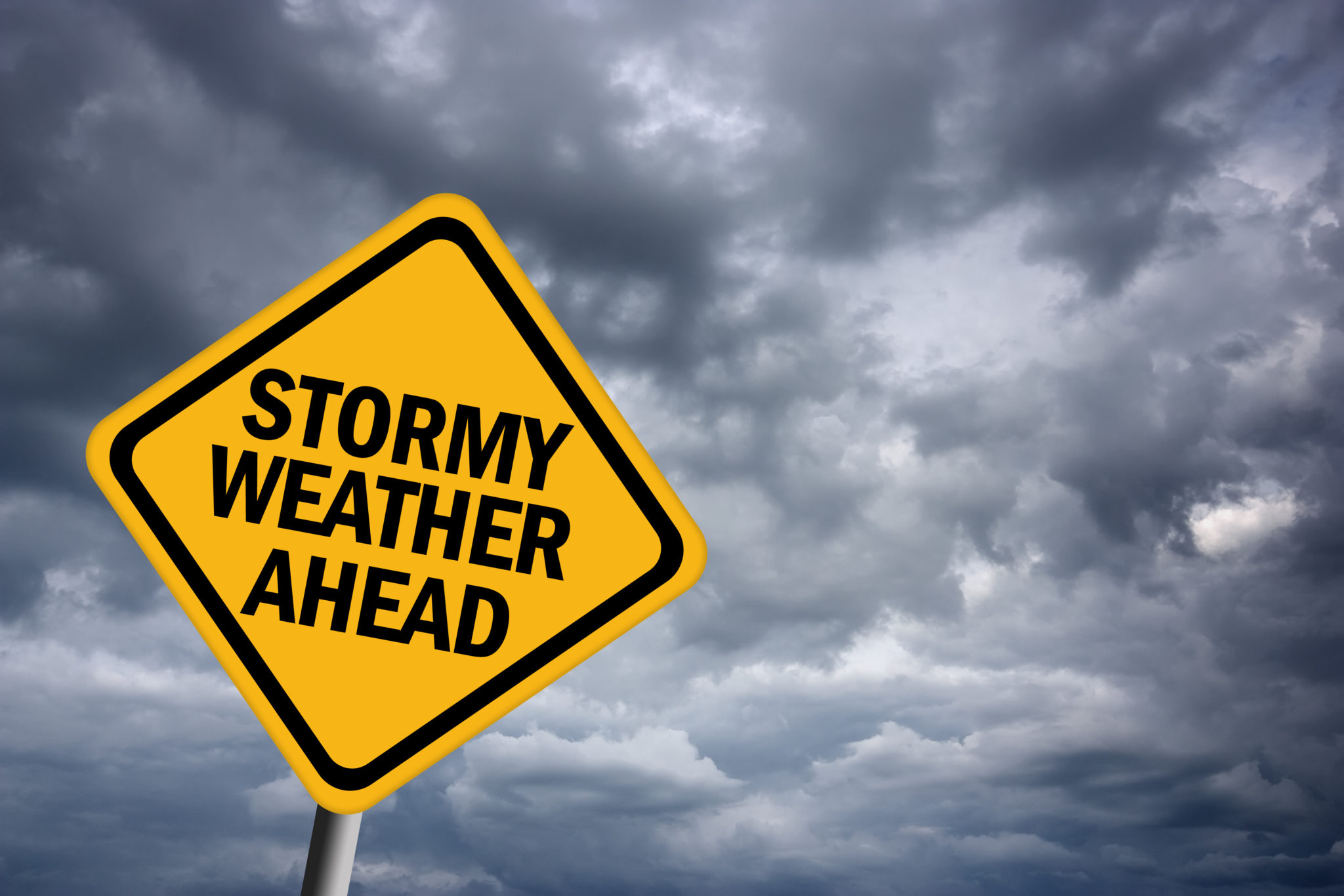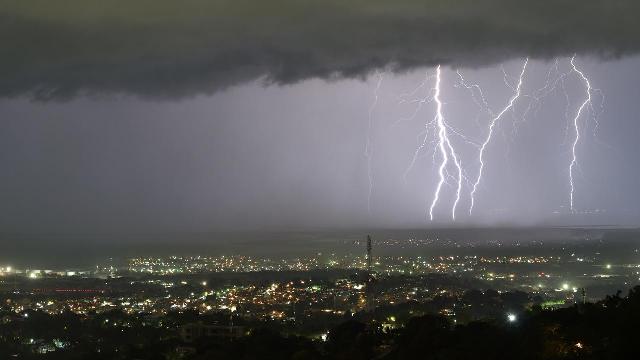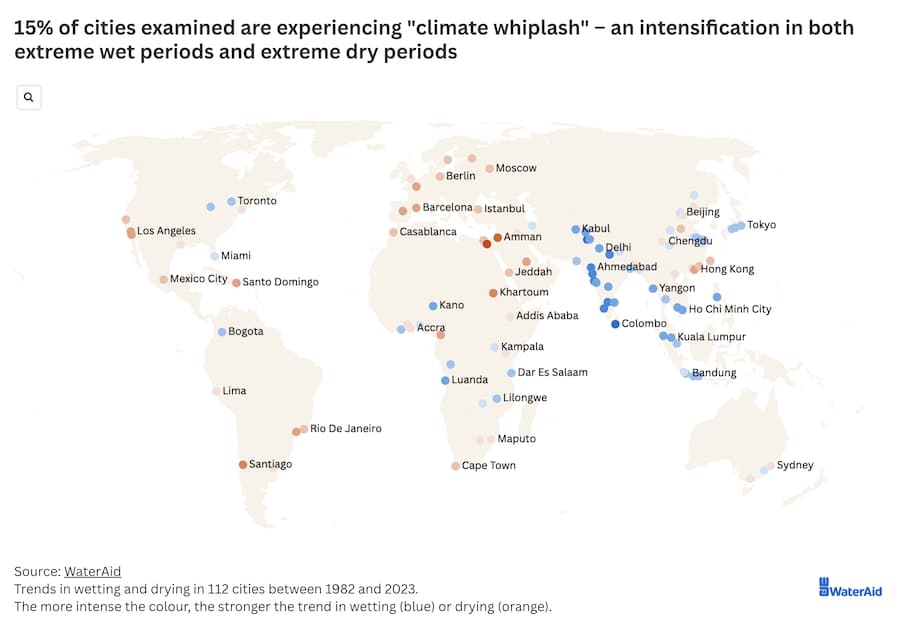Navigating Floods: A Comprehensive Guide For Severe Weather Awareness Week Day 5

Table of Contents
Understanding Flood Risks and Identifying Your Vulnerability
Before a flood hits, understanding your risk is paramount. This involves assessing your location and learning to recognize warning signs.
H3: Assessing Your Location:
Knowing your vulnerability to flooding is the first step in effective flood preparedness. Here's how to assess your risk:
- Identify flood zones: Utilize online resources like the FEMA (Federal Emergency Management Agency) flood map service to pinpoint flood-prone areas in your community. Knowing if your home is in a high-risk flood zone is critical for insurance and evacuation planning. Understanding flood zone designations – such as A, AE, AH, and X – will inform your flood mitigation strategies.
- Proximity to water sources: Determine how close your property is to rivers, streams, creeks, lakes, and coastal areas. The closer you are, the higher your risk of flood damage. Consider the topography of the land around you. Low-lying areas are particularly vulnerable.
- Historical flood data: Research historical flood patterns in your area. Local emergency management agencies and historical weather records can provide valuable insights into the frequency and severity of past flooding events. This information will help you gauge your potential exposure to future floods.
- Types of floods: Familiarize yourself with the different types of floods. Riverine floods occur due to overflowing rivers, coastal floods are caused by storm surges, and flash floods develop rapidly due to intense rainfall. Understanding the types of floods prevalent in your area will help you tailor your flood preparedness plan.
H3: Recognizing Flood Warning Signs:
Early recognition of flood warning signs is crucial for timely evacuation and damage mitigation. Watch for these indicators:
- Rising water levels: Monitor water levels in rivers and streams, noting any significant increases. A rapid rise in water levels is a clear sign of impending flooding.
- Heavy rainfall & snowmelt: Prolonged periods of heavy rainfall or rapid snowmelt can lead to flooding. Pay attention to weather forecasts and warnings.
- Official warnings: Heed flash flood warnings and other flood-related alerts issued by local authorities, the National Weather Service, and emergency broadcasters. These warnings are essential for making informed decisions.
- Increased water flow: Observe increased water flow in storm drains, culverts, and ditches. This indicates that the drainage system is overwhelmed and flooding may be imminent.
- Unusual animal behavior: Animals often exhibit unusual behavior before a flood, seeking higher ground. This can be an early indicator of impending danger.
Creating a Flood Preparedness Plan
A well-defined flood preparedness plan is essential for protecting yourself, your family, and your property.
H3: Developing an Emergency Communication Plan:
Effective communication is vital during a flood. Establish these key components:
- Meeting point: Designate a specific location where family members will meet in case of evacuation or separation.
- Contact list: Compile a list of emergency contacts, including family, friends, neighbors, and local authorities. Include out-of-state contacts who can serve as a central point of communication if local networks are down.
- Out-of-area contact: Choose someone outside of your immediate area to serve as the primary contact person for family members to check in with.
H3: Building an Emergency Kit:
Assemble an emergency kit that contains essential supplies for at least 72 hours.
- Essentials: Include non-perishable food, bottled water, prescription medications, a first-aid kit, flashlights, extra batteries, blankets, and copies of important documents (insurance, identification).
- Pet supplies: If you have pets, include pet food, water, medications, leashes, and carriers.
- Personal items: Pack extra clothing, personal hygiene items, and any other essential personal items.
H3: Protecting Your Property:
Taking steps to protect your property can significantly reduce flood damage.
- Elevate valuables: Move important documents, electronics, and valuable items to higher levels in your home.
- Secure loose objects: Secure or remove loose objects from your yard or property that could be swept away by floodwaters.
- Flood barriers/sandbags: If time allows and you are comfortable, install flood barriers or sandbags around your property to help divert floodwaters.
- Flood insurance: Consider purchasing flood insurance, even if you live outside of a designated flood zone. Standard homeowner's insurance policies often do not cover flood damage.
Responding to a Flood
Knowing how to respond to a flood is crucial for your safety.
H3: Evacuation Procedures:
If a flood warning is issued, follow these steps:
- Obey authorities: Immediately follow instructions from local authorities and emergency personnel.
- Evacuation routes: Know your evacuation routes and have alternative routes planned in case primary routes are impassable.
- Secure your home: Secure your home by turning off utilities (gas, electricity, water) before evacuating.
- Take your kit: Take your emergency kit with you during evacuation.
H3: Staying Safe During a Flood:
Your safety is the top priority during a flood. Remember:
- Never drive through floodwaters: Floodwaters can be deeper and faster than they appear, potentially sweeping your vehicle away. Turn around, don't drown.
- Avoid contact with floodwater: Floodwater is often contaminated with sewage, chemicals, and other hazardous materials. Avoid contact at all costs.
- Downed power lines: Stay away from downed power lines, as they may be live and extremely dangerous.
- Protective gear: Wear protective clothing and waterproof boots if you must wade through shallow water.
H3: Post-Flood Actions:
After the floodwaters recede, take these important steps:
- Contact insurance: Contact your insurance company to report damages and begin the claims process.
- Home inspection: Have your home inspected for structural damage by a qualified professional before re-entering.
- Safety first: Do not enter your home until it's deemed safe by authorities or professionals.
- Clean and disinfect: Properly clean and disinfect any items that came into contact with floodwater to prevent mold and mildew growth.
Conclusion
This guide offers crucial information on navigating floods, from understanding risks to implementing effective preparedness and response strategies. Remember, being prepared is vital. By understanding flood risks, developing a comprehensive preparedness plan, and knowing how to respond to a flood, you can significantly mitigate potential damage and ensure the safety of yourself and your loved ones. Take proactive steps to improve your flood preparedness today, and learn more about flood mitigation techniques in your community. Don't wait for a flood to hit—improve your flood safety now!

Featured Posts
-
 Funeral Service Held For Hells Angels Biker Killed In Accident
May 26, 2025
Funeral Service Held For Hells Angels Biker Killed In Accident
May 26, 2025 -
 A Fathers Grief And Joy Jonathan Peretzs Story Of Loss And Reunion
May 26, 2025
A Fathers Grief And Joy Jonathan Peretzs Story Of Loss And Reunion
May 26, 2025 -
 All Star Weekend A Deeper Dive Into The Casting Of Robert Downey Jr
May 26, 2025
All Star Weekend A Deeper Dive Into The Casting Of Robert Downey Jr
May 26, 2025 -
 Moto Gp Inggris 2025 Semua Yang Perlu Anda Ketahui Jadwal Siaran Langsung And Klasemen
May 26, 2025
Moto Gp Inggris 2025 Semua Yang Perlu Anda Ketahui Jadwal Siaran Langsung And Klasemen
May 26, 2025 -
 The China Us Trade Truce A Boon For Exporters
May 26, 2025
The China Us Trade Truce A Boon For Exporters
May 26, 2025
Latest Posts
-
 Prakiraan Cuaca Besok 24 April Di Jawa Tengah Antisipasi Hujan Sore
May 28, 2025
Prakiraan Cuaca Besok 24 April Di Jawa Tengah Antisipasi Hujan Sore
May 28, 2025 -
 Global Cities Under Siege The Impact Of Dangerous Climate Whiplash
May 28, 2025
Global Cities Under Siege The Impact Of Dangerous Climate Whiplash
May 28, 2025 -
 Cuaca Bandung Besok 22 4 Perkiraan Hujan Pukul 1 Siang
May 28, 2025
Cuaca Bandung Besok 22 4 Perkiraan Hujan Pukul 1 Siang
May 28, 2025 -
 Increased Precipitation In Western Massachusetts A Climate Change Analysis
May 28, 2025
Increased Precipitation In Western Massachusetts A Climate Change Analysis
May 28, 2025 -
 Update Prakiraan Cuaca Jawa Barat Hujan Diprediksi Hingga Sore
May 28, 2025
Update Prakiraan Cuaca Jawa Barat Hujan Diprediksi Hingga Sore
May 28, 2025
